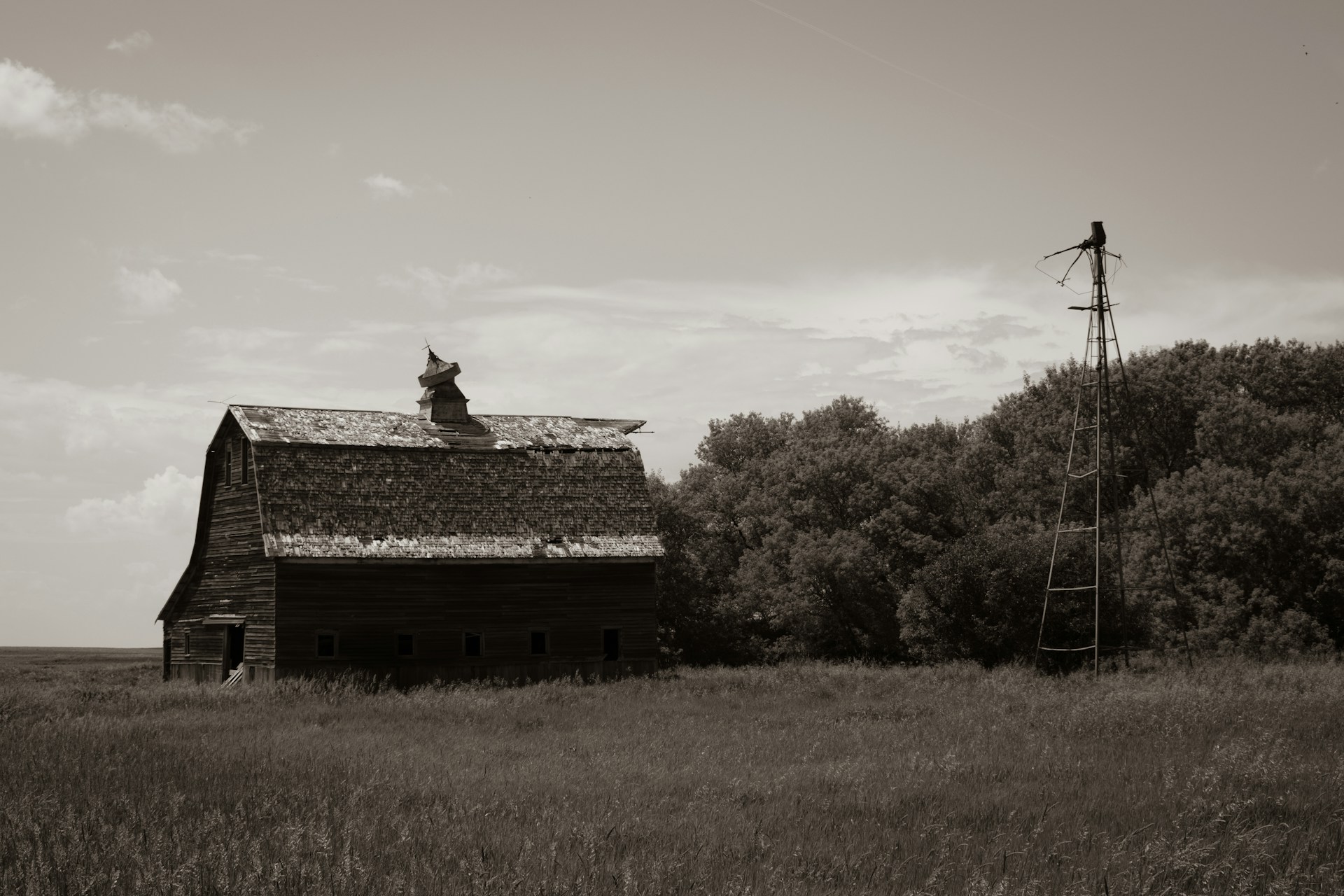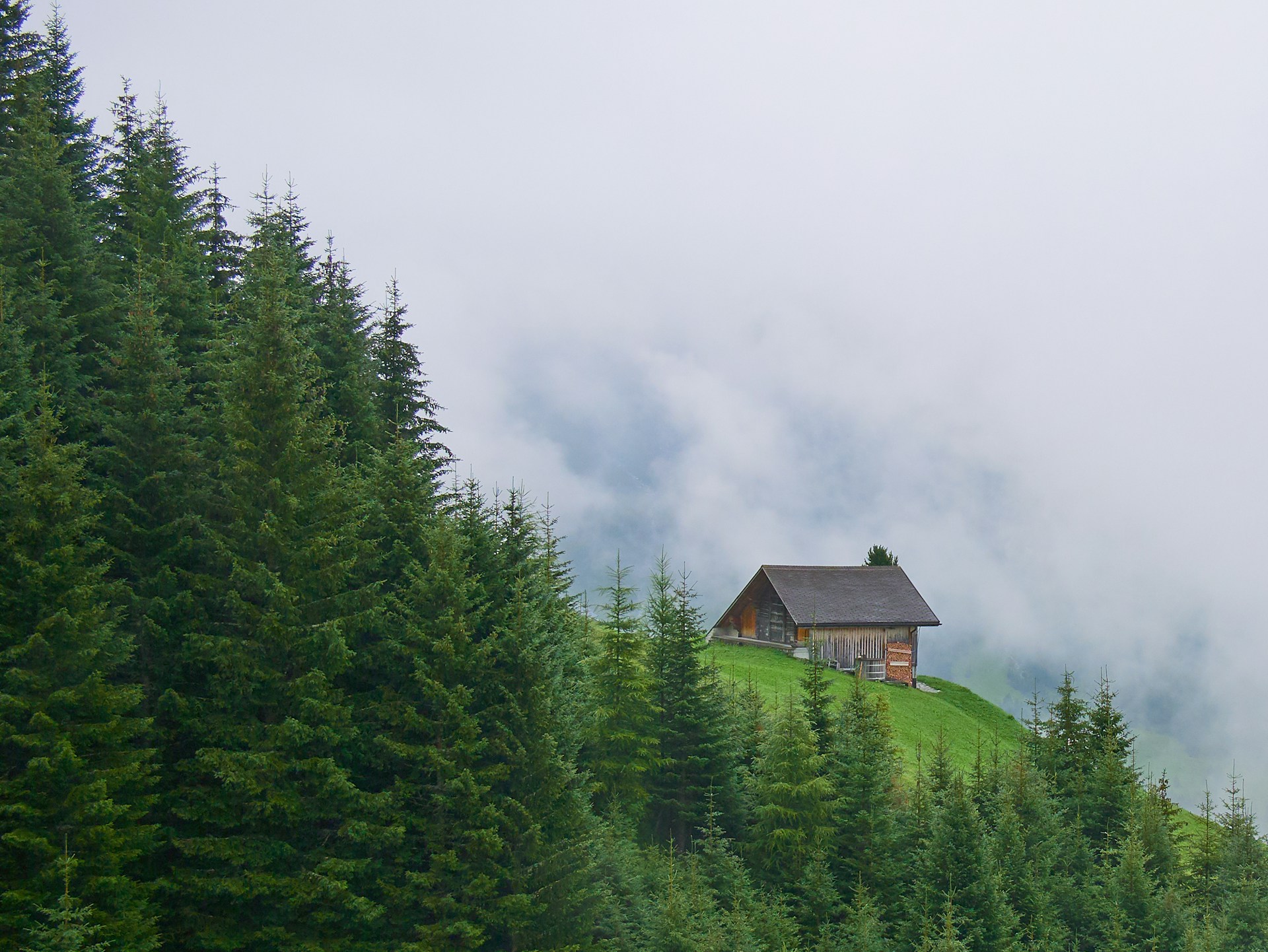Preparedness
Fugitive Encounter: Georgia Man’s Vigilance and Gun Ownership Thwart Escapee

A Georgia resident recently experienced a dramatic encounter when an escaped inmate showed up outside his home. The inmate, Bruce Douglas Partin Jr., had been on the run for three days after escaping from a work detail at the county dump. Caught unawares in a situation that many dread, the resident, Steven Kirby, handled the situation with the steel-nerved calm of a seasoned survivalist.
Partin had managed to evade the Towns County Sheriff’s Office, despite their extensive search efforts, which included deploying a drone and K-9 tracking dog. Partin, a resident of the Towns County Detention Center, was awaiting court appearances for several charges, which ranged from theft to probation violation and manufacture of marijuana.
“Authorities added that Partin was spotted on a trail camera at the end of Ivy Mountain Road in the Fodder Creek area Tuesday around 1:20 p.m. The sheriff’s office Facebook post includes a pair of images showing Partin in the woods.”
In a bid to recapture the fugitive, the Georgia State Patrol, Georgia Bureau of Investigation, and the Department of Natural Resources pooled their resources. Despite the combined effort, Partin remained elusive, with authorities confirming he was still at large as of Tuesday afternoon.
The first breakthrough came when a resident spotted Partin, clad in his orange jail uniform, around 5:15 p.m. Thursday. This sighting prompted a surge of sheriff’s deputies to the area, ramping up the search mission.
However, it was Steven Kirby who became the pivotal player in this pressing saga. When his labradoodle, Odie, began to act aggressively, alerting him to someone outside his home, he ventured out to investigate. He was met with the imposing figure of Partin, standing 6 feet, 4 inches tall.
“But Kirby had a gun on him, and authorities said he drew his weapon and ordered Partin to the ground. Partin complied.”
An image shared on the sheriff’s Facebook page showed the dramatic moment of Kirby, gun drawn, standing over a compliant Partin. Kirby’s wife, Amy, called 911, and deputies arrived quickly to take Partin into custody, marking the end of his three-day run.
Sheriff Ken Henderson expressed his gratitude for the help from the Fodder Creek community and specifically praised Kirby for his courageous action.
“It is truly a pleasure to work in a community where we can count on the ongoing support of citizens like Mr. Kirby to stand behind us and, in cases like this, even physically aid us when necessary.”
Kirby and his dog Odie were recognized for their instrumental roles in Partin’s capture, and the family received a $500 reward.
“Sheriff Henderson strongly supports the 2nd Amendment and the right to bear arms and was thankful that Mr. Kirby’s instincts kicked in, and he went above and beyond to not only protect his family and property but his community as well,” the sheriff’s office Facebook entry said.
The incident serves as a compelling reminder of the importance of preparedness, vigilance, and the courage to act when called upon.
Let us know what you think, please share your thoughts in the comments below.

Preparedness
Uncover America’s Legendary Homesteaders Who Shaped Our Nation

The resurgence in homesteading today is a testament to the enduring appeal of self-sufficiency and the fulfillment of living off the land. This lifestyle, however, is far from a modern invention. Many contemporary homesteaders draw inspiration from the pioneering spirits of America’s past, immortalized in stories like “Little House on the Prairie” and the writings of Willa Cather.
Historically, the Homestead Act of 1862 played a pivotal role in shaping the American frontier. As noted by The History Channel, the Act “accelerated settlement of U.S. western territory by allowing any American, including freed slaves, to put in a claim for up to 160 free acres of federal land.” This landmark legislation required settlers to reside on the land for five years, build a home, and cultivate the land to earn ownership. By the time the Act was repealed in 1976, with Alaska continuing until 1986, it had facilitated around 4 million homestead claims, spanning 270 million acres—10% of the United States’ area.
Amid these millions of claims are stories of remarkable individuals who embraced the homesteading life. Daniel Freeman is celebrated as the first American homesteader. According to the National Park Service, “Legend has it that Daniel Freeman filed his claim 10 minutes after midnight at the Land Office in Brownville, NE on January 1, 1863, the first day the Homestead Act went into effect.” His homestead became a family legacy, with his children building homes on the land and contributing to its development.
Mary Meyer stands out as a trailblazer among female homesteaders. Despite the challenges faced by single women in the 19th century, Meyer successfully claimed her homestead in 1863 after her husband’s death. Historian Blake Bell highlights the significance of such achievements: “Land is power. It really is. And especially in the mid-19th century. And women that are able to acquire land were able to increase not only their economic power, they’re increasing their social and political power as well.” Meyer’s story is a testament to resilience and independence.
The famous Wilder Ingalls family, immortalized in Laura Ingalls Wilder’s novels, also carved out their place in homesteading history. Their experiences of hardship and resilience on the South Dakota plains have inspired generations. Laura’s marriage to fellow homesteader Almanzo Wilder led them to eventually settle in Mansfield, Missouri, where their homestead remains a testament to their enduring legacy.
Among the African American homesteaders who emerged in the wake of the Emancipation Proclamation was George Washington Carver. Known for his groundbreaking work with peanuts, Carver initially tried his hand at homesteading in Kansas. Although his homesteading venture was short-lived, his contributions to agriculture and science left an indelible mark on history.
Finally, Ken Deardorff holds the distinction of being America’s last official homesteader. After serving in Vietnam, Deardorff ventured to Alaska in 1974. He filed a claim for 50 acres near the Stony River in 1979, living in a tent while building a cabin for his family. The remoteness of his homestead required ingenuity and perseverance, with Deardorff opening a small store and trapping to sustain his family. It wasn’t until 1988 that he received the patent to his land, two years after the Homestead Act was repealed. The National Park Service confirms, “It was determined in 2001 that Ken Deardorff was, in fact, the last American to obtain a title for homestead property.”
These stories of courage and determination continue to inspire those who seek a life of self-reliance and connection to the land. As we learn from the past, we are reminded that with hard work and dedication, the dream of homesteading can still be realized today.
Let us know what you think, please share your thoughts in the comments below.
Preparedness
Unlock Hidden Storage Secrets for Ultimate Preparedness at Home

In the world of preparedness, the quest for space is a common challenge. Many people wonder where to store all the essentials they might need without compromising their living space. This is where lessons from the Tiny House movement can be invaluable. In tiny homes, every inch counts, and maximizing space is an art form.
Jack Spirko wisely advises that “everything you do to prepare should help you today, not just in a disaster.” This philosophy encourages a lifestyle where preparedness enhances daily living rather than becoming a source of stress.
One of the most common storage questions is how to find space for everything you might need. While it’s unlikely that you’ll find room for absolutely everything, creativity can help you make the most of the space you do have.
Take, for example, the area under your bed. It’s an often-overlooked storage opportunity. Using bed risers or low-profile totes, you can store a surprising amount of supplies under a king-size bed. This is just one bed—imagine the potential in multiple bedrooms.
Closets, too, offer hidden potential. Most closets have a shelf above the clothes rod, which can be enhanced by adding another shelf or placing a tower bookshelf on the existing one. This creates a double-decker effect, perfect for storing items like freeze-dried food or toilet paper. If you prefer discretion, there are many ways to conceal these items, from painted cardboard to lightweight wooden panels.
Cabinet tops are another underutilized space. Often, there is a gap between the cabinet and the ceiling, just waiting to be filled. This area is ideal for storing dry goods in decorative containers, adding both function and aesthetic appeal to your kitchen.
Drawers, often reserved for everyday items, can also serve as storage for emergency supplies. Consider dividing a deep drawer, using the front portion for daily needs and the back for emergency items. Installing drawer glides that stop unless a button is pressed can create a hidden compartment, adding an extra layer of security.
Finding space isn’t just about clever storage solutions; it’s also about decluttering. Go through your belongings and decide what truly holds value. Items like your child’s first outfit may be worth keeping, but clothes they outgrew years ago might not. The same goes for books and magazines—consider whether you’ll read them again. By organizing and eliminating unnecessary items, you can free up significant space in your home and mind.
While food needs a climate-controlled environment, non-temperature-sensitive supplies can be stored in a garage or shed. This includes tools, medical supplies, and camping gear. Although renting off-property storage is an option, it’s generally best to keep supplies close by to ensure accessibility in emergencies.
Incorporating these tiny house-inspired strategies can transform your home into a more efficient and prepared space, enhancing your everyday life while ensuring you’re ready for whatever comes your way.
Let us know what you think, please share your thoughts in the comments below.
Preparedness
Discover Nature’s Secret Weapons for Wound Healing

Modern medicine has undeniably transformed healthcare, offering life-saving treatments and improved quality of life. However, nature also provides an array of resources that can aid in maintaining and restoring health, especially when it comes to wound healing. Here, we explore five natural remedies that can effectively assist in wound care, alongside five methods that should be approached with caution.
While antibiotics are crucial in combating bacterial infections, their overuse can lead to antibiotic resistance. This is a significant concern, with the Centers for Disease Control and Prevention (CDC) highlighting it as “one of the world’s most pressing public health problems.” For those seeking alternatives, peppermint essential oil shows promise. A 2019 study revealed that peppermint essential oil, when used correctly, “ha[d] the potential for applications in antibiotic-free bacterial infection treatment as wound healing materials.”
Aloe vera, often referred to as America’s favorite succulent, is renowned for its ability to protect and heal the skin. A comprehensive review of 23 studies in 2019 confirmed Aloe vera’s efficacy in treating various wounds, including burns and chronic wounds like pressure ulcers. However, it’s important to note that Aloe vera should not be used on severe wounds or deep cuts.
Onions have been used in traditional remedies for centuries, dating back to the Roman Empire. Modern research supports the use of onion extract in wound care, as it can “accelerate acute wound repair” and minimize scarring, particularly hypertrophic and keloid scars. These scars are characterized by reddish nodules at the wound site.
Garlic, another ancient remedy, boasts a history of medicinal use dating back to 1,500 BC. It was even found in Tutankhamen’s tomb. Garlic’s wound-healing properties are largely attributed to “allicin,” a molecule with antioxidant and anti-inflammatory effects. Studies indicate that garlic ointment can stimulate fibroblasts, which play a crucial role in organizing and accelerating wound repair.
Turmeric, celebrated for its medicinal compounds known as “curcuminoids,” offers powerful anti-inflammatory and antioxidant benefits. Research has demonstrated that curcumin possesses “significant wound healing properties,” acting on various stages of the healing process. However, while topical application is beneficial, orally ingesting turmeric for wound healing is not recommended due to potential side effects, such as uterine bleeding or contractions in pregnant women.
While these natural remedies offer promising benefits, some traditional methods should be avoided. St. John’s wort, although useful in some medical applications, can dangerously interact with several medications. In some countries, its use is restricted or banned without a prescription.
Egg whites, sometimes used as a home remedy for burns, pose a risk due to their high bacterial content, including salmonella. This makes them unsuitable for application on wounds.
Similarly, using saliva to clean wounds is ill-advised. As holistic physician Svetlana Kogan, MD, notes, “Our breath and saliva have tons of bacteria which can contaminate [a] wound and lead to an infection.” Instead, wounds should be cleaned with water and properly sanitized.
Human breast milk, while shown to aid wound healing due to its bioactive components, can also transmit diseases if not handled correctly. Dr. Sarah Yamaguchi warns that “breast milk can transmit infectious diseases such as HIV,” and improper storage can introduce bacteria.
In conclusion, nature offers a wealth of effective wound-healing options. However, it’s essential to conduct thorough research and consult healthcare professionals before trying any natural remedy.
Let us know what you think, please share your thoughts in the comments below.
-

 Tactical1 year ago
Tactical1 year ago70-Year-Old Fends Off Intruder with Lead-Powered Message
-

 Tactical1 year ago
Tactical1 year agoVape Shop Employee Confronts Armed Crooks, Sends Them Running
-

 Preparedness9 months ago
Preparedness9 months agoEx-Ballerina’s Guilty Verdict Sends Tremors Through Gun-Owner Community
-

 Preparedness8 months ago
Preparedness8 months agoGood Samaritan Saves Trooper in Harrowing Interstate Confrontation
-

 Tactical1 year ago
Tactical1 year agoMidnight SUV Theft Interrupted by Armed Homeowner’s Retaliation
-

 Survival Stories2 years ago
Survival Stories2 years agoEmily’s 30-Day Experience of Being Stranded on a Desert Island
-

 Preparedness8 months ago
Preparedness8 months agoArizona Engineer’s Headless Body Found in Desert: Friend Charged
-

 Preparedness8 months ago
Preparedness8 months agoBoy Saves Dad from Bear Attack with One Perfect Shot
Linda Doyle
July 30, 2024 at 1:22 pm
The home owner did the right thing. If he had not taken this action him and his family most likely would have been harmed or killed. We do have the RIGHT to protect and defend ourselves and our family and home!
Sherlock
July 30, 2024 at 10:16 pm
The only answer to a bad man with a gun, Is a good man with a gun. Rogue Governments want to ban guns so that the good guys can’t protect themselves from criminals and a corrupt Government.
Travis R
August 1, 2024 at 12:17 am
Screw this stupid. Assume it’s a setup until proven different.